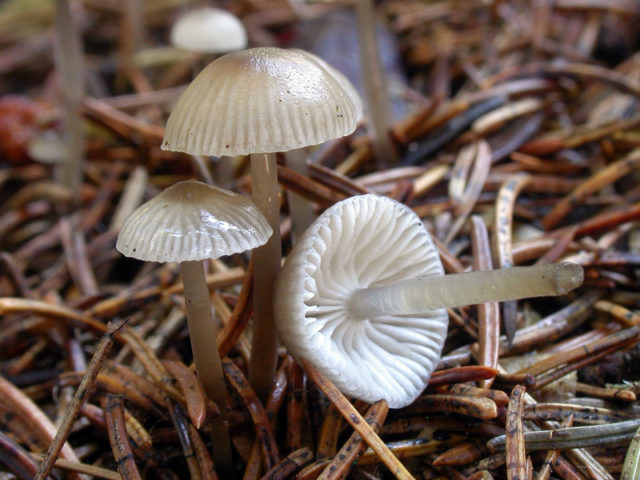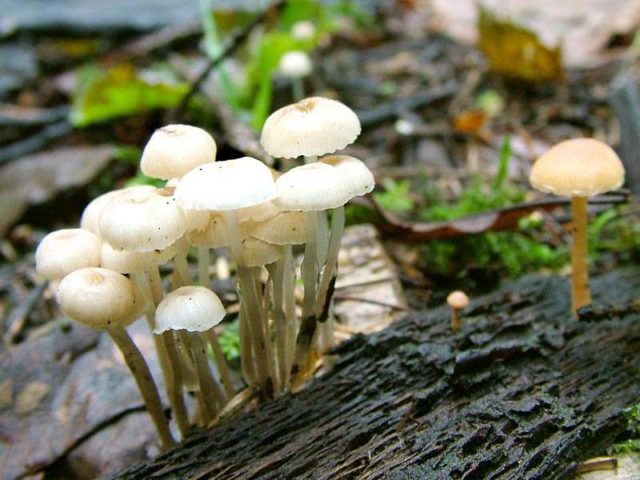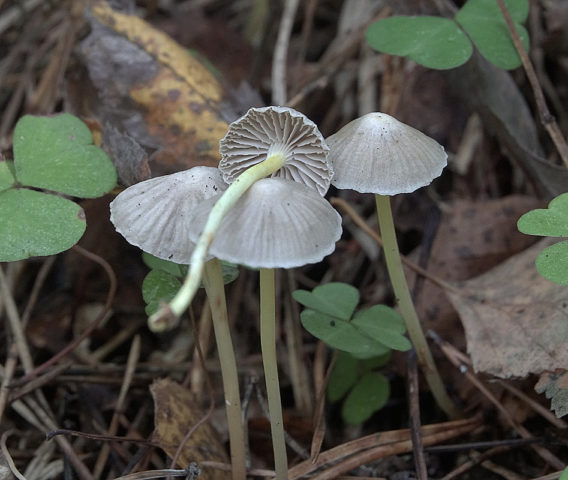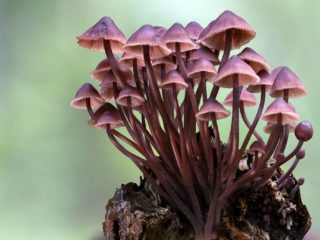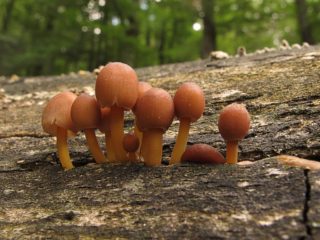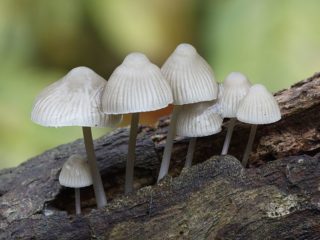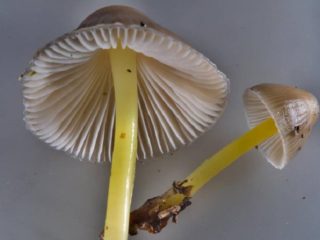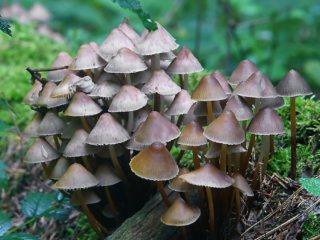Content
Mycena vulgaris is a small-sized saprophyte mushroom, considered inedible. They belong to the Mycene family, the Mycena genus, which unites about 200 species, 60 of which are found on the territory of Russia.
What do mycenae look like?
In a young mushroom, the cap is convex, in a mature one it is wide-conical or open. The diameter does not exceed 1-2 cm. The middle is most often depressed, sometimes with a tubercle in the center, the edge is grooved, on the surface of the strip. The cap is transparent, gray-brown, light gray-brown, gray-fawn, gray-brown, with a brown eye, darker in the center, lighter along the edge.
The leg is straight, hollow, cylindrical, rigid. The surface is mucous, sticky, shiny, smooth, with whitish, rough, long hairs at the base. Leg height - from 2 to 6 cm, thickness from 1 to 1.5 mm. The color is grayish, grayish brown, dark brown below.
The plates are rather rare, arcuate, with a slimy edge, flexible, descending to the pedicle. The color is white, pale gray, light gray-brown.
Elliptical spores, amyloid. Size - 6-9 x 3.5-5 microns. Basidia are tetrasporous. The powder is white.
The flesh is whitish, flexible and thin. Has practically no taste, the smell is rancid-flour or sparse, not pronounced.
In Russia, you can find other mycenae, similar in appearance to an ordinary one, but having their own characteristic features.
Similar instances
Mycena is dewy. Differs in smaller sizes. The diameter of the cap is 0.5 to 1 cm. In a young mushroom, it is bell-shaped or hemispherical, with growth it becomes convex, wrinkled-pitted with uneven edges, then prostrate, ribbed or wrinkled, with a carved edge. When dry, a scaly plaque forms on the surface. The color is whitish or cream, in the middle it is darker - grayish, beige, pale ocher. The plates are white, thin, sparse, descending, with intermediate ones. Basidia are two spore, the spores are larger - 8-12 x 4-5 microns. The pulp is white, thin. The leg with a mucous cover, smooth, with a characteristic distinguishing feature - drops of liquid. Height - from 3 to 3.5 cm, thickness about 2 mm. Above, the color is whitish, below it is beige or fawn. Grows in small groups or concretions in coniferous and mixed forests on decayed wood, fallen leaves and needles. Not common, bears fruit from June to autumn. There is no information about edibility.
Mycena is slimy (sticky, slippery, or lemon yellow). The main differences are adherent plates, a yellowish and thinner stem. Spores are smooth, colorless, elliptical, larger than those of a relative, their size is on average 10x5 microns. The cap is grayish-smoky, the diameter is from 1 to 1.8 cm. The shape of young specimens is hemispherical or convex, the edge is whitish-yellow or gray, with a sticky layer. The plates are thin, whitish, rather sparsely located.
The leg is lemon-yellow, covered with a layer of mucus, slightly pubescent in the lower part. Its height is 5-8 cm, diameter is 0.6-2 mm. It got its name from the unpleasant slippery surface of the fruiting body.
The fungus appears in late summer and bears fruit throughout the fall. It settles in mixed, deciduous and coniferous forests, grows on moss-covered surfaces, fallen needles and leaves, last year's grass. It is considered not edible, but not poisonous. It is not eaten due to its too small size.
Where do mycenae grow
Mycenae ordinary lives in coniferous and mixed forests.It belongs to saprophytes, grows in groups on a litter of fallen needles, does not grow together with fruit bodies.
Distributed in Europe, including Russia, found in North America and Asian countries.
Fruiting from late summer to mid-autumn.
Is it possible to eat common mycenae
Refers to inedible species. It is not poisonous. It does not represent nutritional value due to its small size and difficulties with heat treatment. Collecting it is not accepted, many mushroom pickers consider it a toadstool.
Conclusion
Mycena vulgaris is a rare inedible mushroom. In some European countries, such as the Netherlands, Denmark, Latvia, France, Norway, it is marked as endangered. Not included in the Red Book of Russia.
